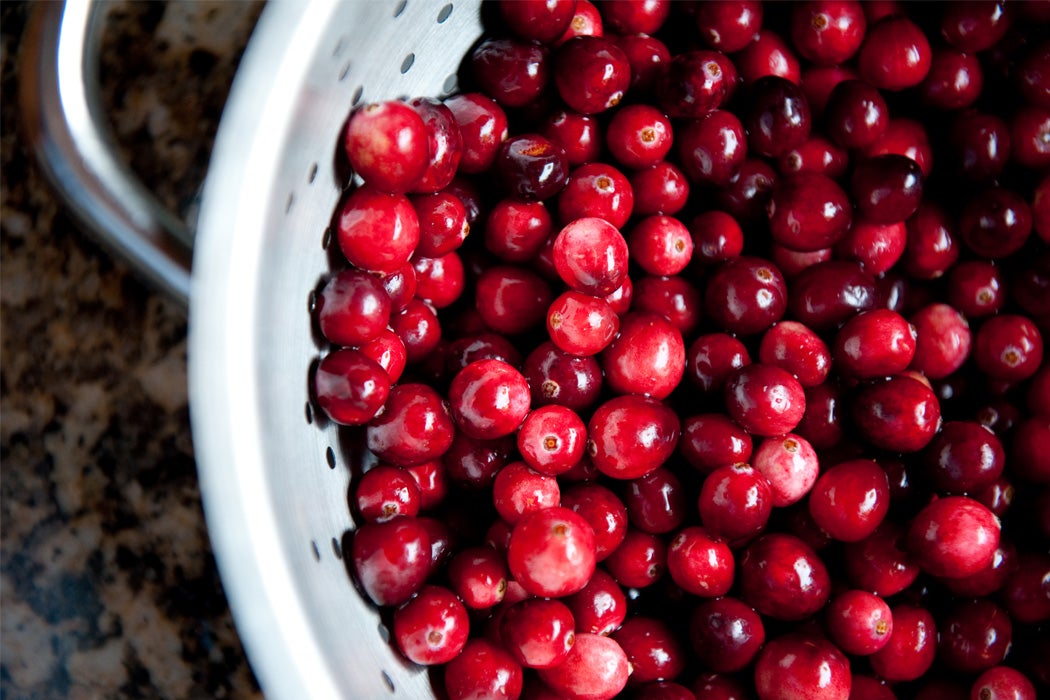- There are a couple different species of cranberry native to the northern hemisphere. The name cranberry is an English shortening of the German kraanbere, which translates as crane berry—so named because the flowers were said to look like a crane’s head. English colonists named the North American berries after the species they were familiar with back in England.
- American cranberries were eaten by this continent’s native peoples long before any Europeans showed up. Unsurprisingly, since they are so nutritious, cranberries were one of the ingredients in pemmican, a pounded meat/fat and nut/fruit mixture that packed a wallop on long journeys. It might be thought of as the original trail mix.
- Cranberries have helped in the fight against scurvy. High in vitamin C, the whole berries travel extremely well and can last for a year after being picked if they’re stored properly.
- Cranberries were first grown commercially in the nineteenth century. This is a tough little fruit, as befitting something that favors growing in sandy, acidic bogs… and being drowned. There are only so many such bogs in this world. Massachusetts saw the first commercialization of cranberries in 1816. In 1828, New Jersey, with its fabled cranberry country in the Pine Barrens region, was the first place the berries were planted rather than just wild harvested.
- The upper Midwest was an important player in making cranberries a big commercial crop. Kimberly Aime tells the story of Wisconsin’s rise to cranberry capital of the United States. Today the state produces some 65% of the American crop. Aime reveals that the central part of Wisconsin became famous for its “red gold” crop in the second half of the nineteenth century. She reproduces a help-wanted poster from 1884: 200 cranberry pickers were needed; wages were 75 cents per bushel; there was a special train to carry them to the fields. In 1889, the area known as Bearss, Wisconsin, was changed to Cranmoor to honor the lucrative berry.
- Cranberries float. Each berry—they can be red or white or some variation in between—has four air pockets within it, so it floats like a buoy. Cranberry harvesting is still a spectacle. The fields are flooded in October. The colorful floating berries are corralled by farmers and vacuumed up out of the water.
- Only about five percent of the United States crop is sold fresh. Most of the crop is then processed into juices, juice blends, and cranberry sauce in a can. Americans consume 400 million pounds per year—20% of that during Thanksgiving.
Get Our Newsletter
Have a correction or comment about this article?
Please contact us.
Please contact us.

Resources
JSTOR is a digital library for scholars, researchers, and students. JSTOR Daily readers can access the original research behind our articles for free on JSTOR.
The Wisconsin Magazine of History, Vol. 97, No. 1 (AUTUMN 2013), pp. 2-13
Wisconsin Historical Society






